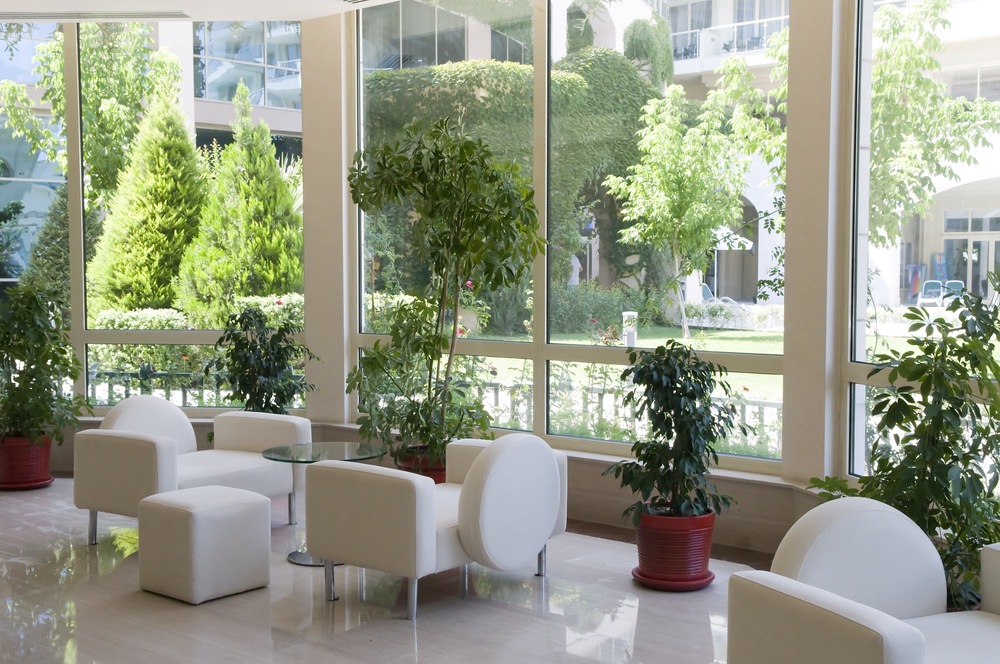Office Plants Improve Your Indoor Environment
Are you skeptical that office plants can truly make a difference in your facility’s indoor environment? Not only can office plants make it easier to breathe in your office, but they can also offset serious issues with indoor air quality.

An extensive study conducted by NASA (yes, the space agency!) documents a variety of surprising benefits, the most important of which was that office plants can reduce or eliminate the effects of Sick Building Syndrome. Similar results have since been obtained by Penn State University, Colorado State University and the University of Georgia, among others.
What is Sick Building Syndrome?
Sick building syndrome, the term used to describe a collection of acute and chronic symptoms that result from spending time in a specific facility, has no known cause. Despite its mysterious origins, this syndrome affects almost one-third of both new and existing buildings worldwide.
Common physical symptoms include respiratory ills, asthma, flu-like symptoms, nausea, headache and dizziness. Neurological symptoms include the inability to concentrate, irritability, fatigue and even personality changes. This condition is characterized by the disappearance of symptoms shortly after sufferers leave the building.
Some potential causes include flawed ventilation systems, the presence of mold, the use of volatile organic compounds (VOCs) in construction materialsand excessively high concentrations of ozone, benzene or other hazardous chemicals.
How Do Office Plants Clean Impurities from Indoor Air?
Office plants can successfully filter ozone, formaldehyde, toluene, benzene and trichloroethylene (TCE) from the indoor air. They are especially effective in buildings that lack adequate ventilation.
This process, known as phytoremediation, is used often by scientists to remove toxins from soil, air and water. During phytoremediation, plants absorb pollutants through their leaves and roots. Chemical reactions occur within the plant as well as its surrounding soil that neutralize the toxins and, as a result, a byproduct of clean, oxygenated air is released by the plant.
Which Office Plants Clean the Air Most Efficiently?
Some indoor plants are more efficient than others for targeting specific pollutants, while others can capably handle a wide range of airborne toxins.
Tops on the list are the Peace Lily, English Ivy and the Variegated Snake Plant, more commonly known as mother-in-law’s tongue. Chrysanthemums are also great for cleaning a variety of chemical from the air as are Red-Edged Dracaena.
If you know which chemicals are most concentrated in your facility’s air, you can choose indoor plants that target those substances specifically. For example, choose Chinese Evergreen to combat benzene, Flamingo Lily for ammonia and the Weeping Fig for toluene and xylene.
For a full breakdown of NASA’s findings, you can take a look at their chart of air-filtering plants.
Even if your indoor air isn’t toxic, interiorscapes and indoor plants will improve the appearance and comfort of your office or facility. In Salt Lake City, contact Living Creations for professional plant services. We serve customers throughout Northern Utah, providing design, installation and full care services. Contact us today to learn more about the benefits of adding interiorscapes and office plants to your facility.
